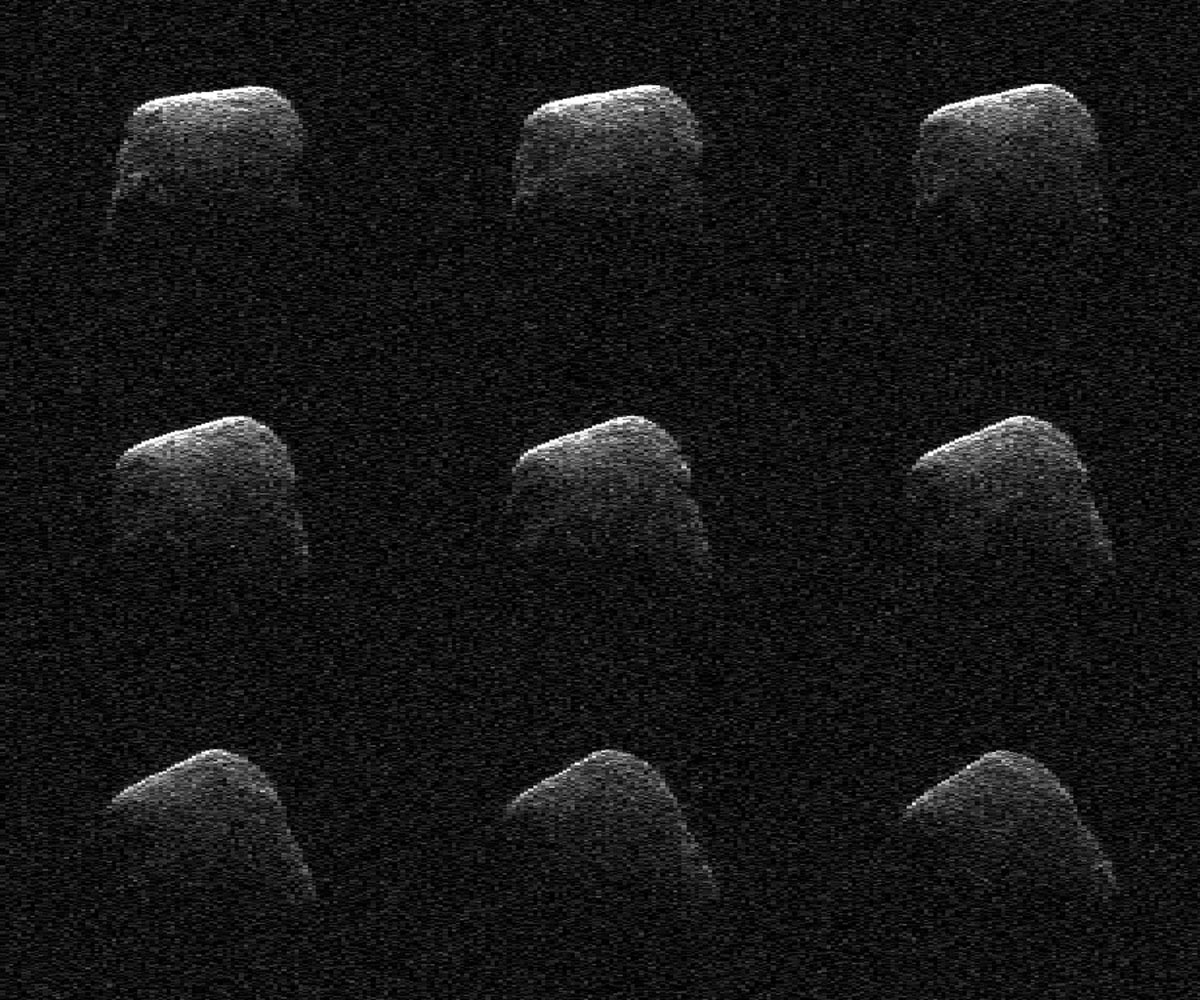
The “Comet of the Week” this week is Comet IRAS-Araki-Alcock 1983d, which passed just 0.031 AU (4.68 million km, or 12.2 lunar distances) from Earth on May 11, 1983 – the closest confirmed cometary approach to Earth during the 20th Century, and the fifth-closest confirmed such approach in all of recorded history. Within this context, it is perhaps appropriate to examine some of the other very close approaches of comets to Earth.
The comet that has made the closest confirmed approach to Earth was discovered on June 14, 1770 by the renowned French comet-hunter Charles Messier. At that time it was located in Sagittarius and perhaps close to 5th or 6th magnitude, but it brightened rapidly over the subsequent couple of weeks as it approached Earth. On July 1 it passed just 0.0151 AU (2.26 million km, or 5.9 lunar distances) from Earth, and according to Messier and other observers of that time was as bright as 1st or 2nd magnitude and exhibited a coma up to 2½ degrees in diameter (although apparently without any appreciable tail). Within about three days after its closest approach it disappeared into sunlight; Messier later recovered it in the morning sky on August 3 and followed it for the next two months before it faded from view.
According to orbital calculations performed by Swedish mathematician Anders Lexell – for whom the comet was eventually named – the comet was a short-period object with a period of only 5.6 years, and had been placed into that orbit as a result of a very close approach to Jupiter (0.02 AU) in 1767. After being missed due to poor viewing geometry in 1776, Comet Lexell passed even closer to Jupiter (0.0015 AU) in 1779, with the results of that encounter being very difficult to predict; it is possible that the comet was placed into a much-longer period orbit (a few centuries) or perhaps even ejected from the solar system altogether. A re-examination of Comet Lexell’s orbit in 2018 by Chinese-American astronomer Quan-Zhi Ye and his colleagues suggests that the Apollo-type asteroid (529668) 2010 JL33 might possibly be a remnant of Comet Lexell, although it is not possible to establish a definite linkage. (This object passed just 0.043 AU from Earth in late 2010 and became as bright as 13th magnitude, but does not come close again until a moderately close approach of 0.12 AU in December 2045.)
The 20 closest cometary approaches to Earth in recorded history are listed in the following table:
| Rank | Comet | Approach date | Distance (AU) |
| 1. | Lexell 1770 I | 1770 July 1 | 0.015 |
| 2. | 5P/Tempel-Tuttle | 1366 October 26 | 0.023 |
| 3. | PANSTARRS P/2016 BA14 | 2016 March 22 | 0.024 |
| 4. | 289P/Blanpain P/2003 WY25 | 2003 December 11 | 0.025 |
| 5. | IRAS-Araki-Alcock 1983d | 1983 May 11 | 0.031 |
| 6. | 1P/Halley | 837 April 10 | 0.033 |
| 7. | 252P/LINEAR | 2016 March 21 | 0.036 |
| 8. | 3D/Biela 1806 I | 1805 December 9 | 0.037 |
| 9. | Grischow 1743 I | 1743 February 8 | 0.039 |
| 10. | 7P/Pons-Winnecke 1927c | 1927 June 26 | 0.039 |
| 11. | Comet of 1014 (C/1014 C1) | 1014 February 24 | 0.041 |
| 12. | Comet of 1702 (C/1702 H1) | 1702 April 20 | 0.044 |
| 13. | Comet of 1132 (C/1132 T1) | 1132 October 7 | 0.045 |
| 14. | Comet of 1351 (C/1351 W1) | 1351 November 29 | 0.048 |
| 15. | Comet of 1345 (C/1345 O1) | 1345 July 31 | 0.048 |
| 16. | 209P/LINEAR | 2014 May 29 | 0.055 |
| 17. | Comet of 1499 (C/1499 Q1) | 1499 August 17 | 0.059 |
| 18. | 45P/Honda-Mrkos–Pajdusakova | 2011 August 15 | 0.060 |
| 19. | 73P/Schwassmann-Wachmann 3 1930d | 1930 May 31 | 0.062 |
| 20. | Sugano-Saigusa–Fujikawa 1983e | 1983 June 12 | 0.063 |
Comet 1P/Halley is discussed in a previous “Special Topics” presentation, and Comet 55P/Tempel-Tuttle, the parent comet of the Leonid meteor shower, is discussed in a future “Special Topics” presentation. Comet 3D/Biela, which no longer exists, is a previous “Comet of the Week.” Comet Grischow in 1743 is possibly a short-period comet, but it has never been seen since. The comet of 1702 is not the same object as a bright comet seen earlier that year (X/1702 D1) that may have been a Kreutz sungrazer. The comet of 1499 is possibly identical to Comet Levy 1991q, which was found to be a Halley-type comet with an orbital period of 51 years, and when that object returns in 2042 it should be possible to confirm (or disprove) that identity.

In a similar fashion, the following table lists the 20 closest cometary approaches during the “Ice and Stone 2020” era, i.e., within the past 50 years – coincident with the period of time that I have been actively observing comets.
| Rank | Comet | Approach date | Distance (AU) |
| 1. | PANSTARRS P/2016 BA14 | 2016 March 22 | 0.024 |
| 2. | 289P/Blanpain P/2003 WY25 | 2003 December 11 | 0.025 |
| 3. | IRAS-Araki-Alcock 1983d | 1983 May 11 | 0.031 |
| 4. | 252P/LINEAR | 2016 March 21 | 0.036 |
| 5. | 209P/LINEAR | 2014 May 29 | 0.055 |
| 6. | 45P/Honda-Mrkos–Pajdusakova | 2011 August 15 | 0.060 |
| 7. | Sugano-Saigusa–Fujikawa 1983e | 1983 June 12 | 0.063 |
| 8. | 46P/Wirtanen | 2018 December 16 | 0.077 |
| 9. | 73P/Schwassmann-Wachmann 3 | 2006 May 12 | 0.079 |
| 10. | 45P/Honda-Mrkos–Pajdusakova | 2017 February 11 | 0.083 |
| 11. | 107P/Wilson-Harrington P/1979 VA | 1979 October 30 | 0.091 |
| 12. | 289P/Blanpain | 2020 January 11 | 0.091 |
| 13. | 252P/LINEAR P/2000 G1 | 2000 March 4 | 0.097 |
| 14. | Hyakutake C/1996 B2 | 1996 March 25 | 0.102 |
| 15. | 300P/Catalina P/2005 JQ5 | 2005 June 27 | 0.103 |
| 16. | Suzuki-Saigusa-Mori 1975k | 1975 October 31 | 0.104 |
| 17. | 103P/Hartley 2 | 2010 October 20 | 0.121 |
| 18. | Catalina P/2009 WX51 | 2009 December 25 | 0.147 |
| 19. | 169P/NEAT | 2005 August 7 | 0.147 |
| 20. | 6P/d’Arrest 1976e | 976 August 12 | 0.151 |
The lone “Great Comet” on this list is Comet Hyakutake C/1996 B2, which is a previous “Comet of the Week.” Comet 103P/Hartley 2 was encountered by the EPOXI mission (rescaled from the Deep Impact spacecraft) around the time of its 2010 approach to Earth, and an image from this encounter is featured in a previous “Special Topics” presentation.
The top entry on this list and the Number 3 entry on the “recorded history” list, Comet PANSTARRS P/2016 BA14, was a very dim object which appeared almost stellar and never was brighter than 13th magnitude despite its close distance, however radar studies with the DSN tracking antenna at Goldstone, California suggested that its nucleus is close to 1 km in diameter, indicating that it is only very weakly active. Its orbit bears a striking similarity to that of Comet 252P/LINEAR, which passed close to Earth at the same time, and which despite having a smaller nucleus was much brighter (close to 4th or 5th magnitude). This comet was much brighter intrinsically in 2016 than during its discovery return in 2000, when it also came close to Earth (although it wasn’t discovered until over a month later); it makes another close approach in 2032 (see below).
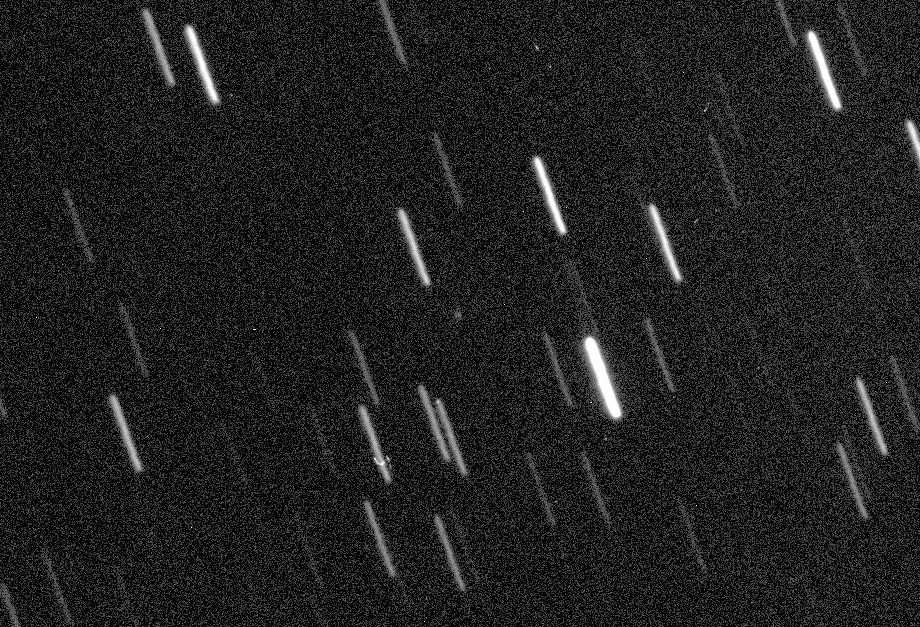
Comet 73P/Schwassmann-Wachmann 3, which had passed close to Earth during its discovery return in 1930 (Number 19 on the “recorded history” list) had split up in the mid-1990s, with over 60 fragments being detected during the close approach in 2006; some of these were bright enough to be visually detectable, and passed even closer to Earth than the primary fragment (which the distance in the above table refers to). An infrared image of the comet, with several of these fragments, taken by the Spitzer Space Telescope is included in a previous “Special Topics” presentation.
Comet 289P/Blainpain was discovered as far back as 1819 and was an obvious comet then, but had been lost ever since. At its re-discovery in 2003 it initially appeared asteroidal and was never brighter than 15th magnitude, however in March 2004 a faint coma was detected with large telescopes. It experienced an apparent outburst in 2013 over a full year before its perihelion passage but was not seen again on that return. On its most recent return it was duly recovered last year, but despite its close approach to Earth this past January it remained a tiny and faint object, never brighter than about 17th magnitude.
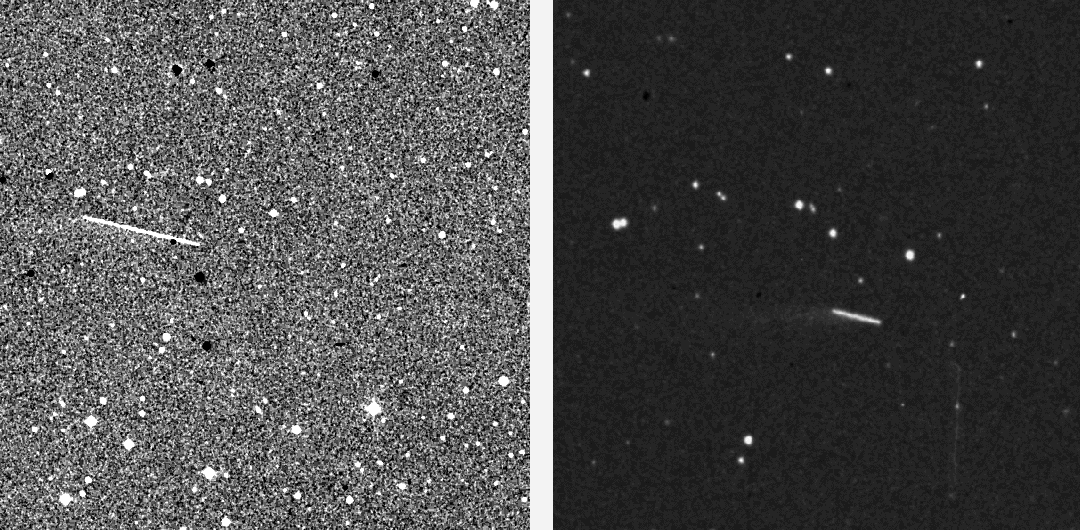
Comet 107P/Wilson-Harrington was discovered in November 1949 during the course of the National Geographic-Palomar Observatory Sky Survey being conducted with the recently-built 1.2-meter Schmidt telescope; it exhibited an obvious tail (although no apparent coma) on both the red and blue discovery plates, but not on plates taken on subsequent nights. It was only followed for four nights and then subsequently lost. It was re-discovered by Eleanor Helin from Palomar in November 1979 but appeared completely asteroidal, and in fact was considered to be an “ordinary” Apollo-type asteroid and later assigned the number (4015); the identity with the lost Comet Wilson-Harrington was not established until 1992. It has never exhibited cometary activity outside of its discovery images, and its true physical nature remains unclear. It will pass close to Earth again in 2039 (see below).
There are some objects that I am excluding from the above lists. The LASCO coronagraphs aboard the SOlar and Heliospheric Observatory (SOHO) spacecraft have detected numerous comets – with some of these perhaps better being described as “apparent comets” – some of which have been found to be traveling on short-period orbits. One of these is P/1999 J6, which is a member of a group the existence of which was first pointed out by Brian Marsden, and which has an orbital period close to 5.5 years and which has been seen (in LASCO images) on two returns since then. Orbital calculations indicate it would have passed just 0.013 AU from Earth on June 12, 1999, one month after perihelion passage (when it appeared in the LASCO images); nothing had been recorded in any of the survey programs operating at the time, although it’s fair to point out that its existence wasn’t detected until a year later. Another of these “comets,” now designated as 323P/SOHO, would have passed 0.058 AU from Earth on January 13, 2000, again one month after it was discovered in LASCO images. Although these are called “comets,” their appearance is basically stellar in the LASCO images, and they have never been detected from the ground; their exact physical nature is unclear.
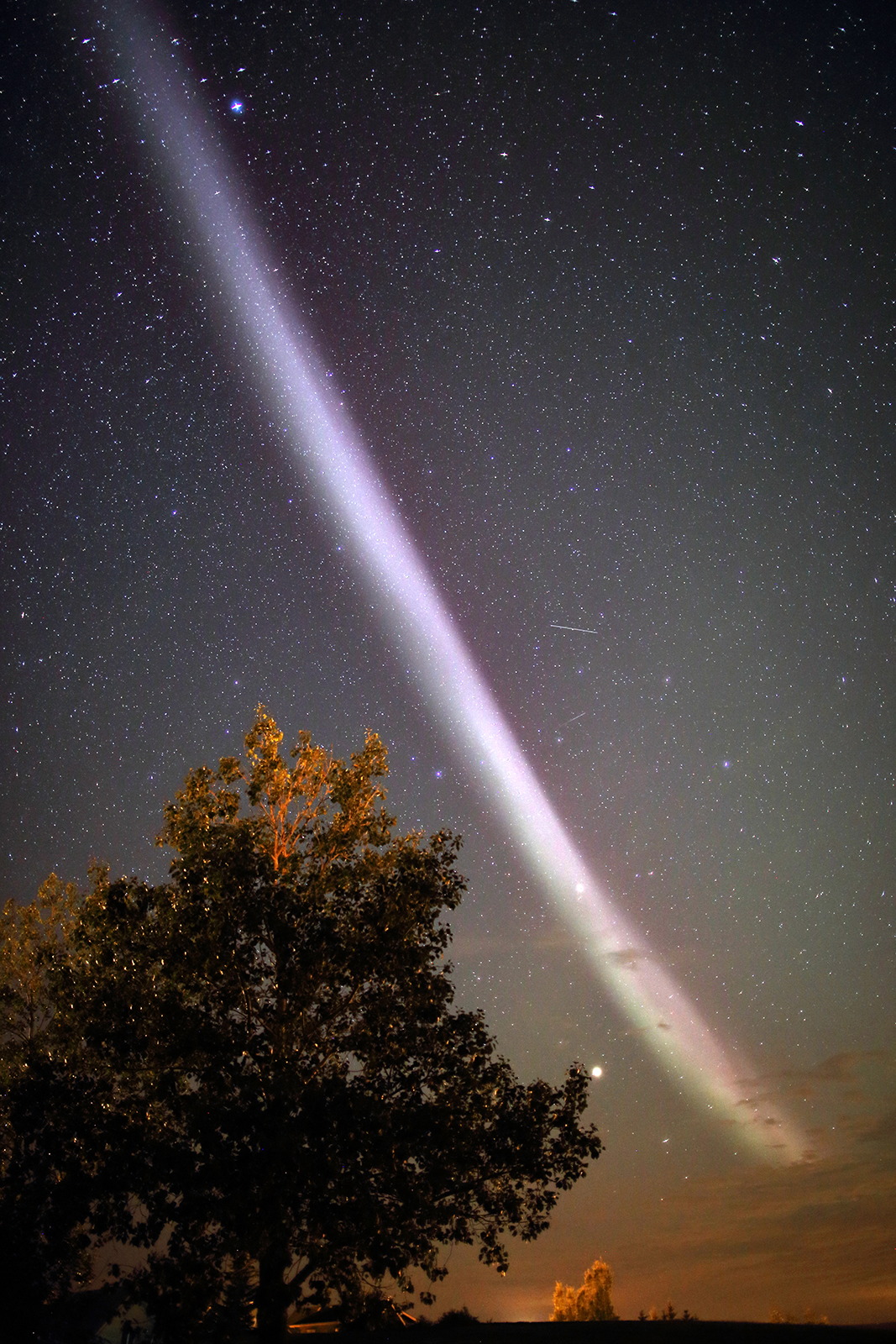
During the late 19th and early 20th Centuries there were several reports of various fast-moving diffuse objects that, in theory at least, could have been small comets passing very close to Earth. The validity of these reports is difficult to evaluate, and the fact that there haven’t been any such reports over the past several decades (when modern equipment and observing techniques are being utilized) is worrisome, but on the other hand some of the reports were made by experienced and capable observers of the time, and the intrinsic brightnesses of these supposed “comets” are reasonably consistent with the dimmer comets that are being discovered nowadays. Julius Franz, then-Director of the observatory at Breslau University (now the University of Wroclaw in Poland) reported seeing such an object in July 1911, and Estelle Glancy and Charles Perrine of the Cordoba Observatory in Argentina reported another such object in May 1916. (Perrine, then-Director of the Cordoba Observatory, had previously worked at Lick Observatory in California, where he discovered nine comets as well as Jupiter’s sixth and seventh moons.) It is perhaps conceivable that the Glancy-Perrine object was an example of the aurora-like phenomenon now called STEVE (Strong Thermal Emission Velocity Enhancement) that has only become recognized within recent years. In any event, in the absence of any confirming information I am excluding these objects from the above lists.
Also excluded from these lists are the objects usually described as “active asteroids” (which are the subject of a future “Special Topics” presentation). Although in some contexts these can perhaps be considered as “comets” – and, indeed, one of them is a previous “Comet of the Week” – the activity they have been seen to exhibit is, in general, due to mechanisms other than sublimation of volatile substances. (3200) Phaethon, which is generally considered as being the parent “comet” of the Geminid meteor shower, and which in fact has exhibited weak cometary activity around some of its perihelion passages, passed 0.121 AU from Earth on December 10, 2007 and 0.069 AU from Earth on December 16, 2017. NASA’s OSIRIS-REx mission, presently in orbit around the near-Earth “asteroid” (101955) Bennu, detected several bursts of jetting activity from that object in early 2019 when it was near perihelion; Bennu passed 0.015 AU from Earth on September 22, 1999 (a week and a half after its discovery) and 0.033 AU from Earth on September 20, 2005.
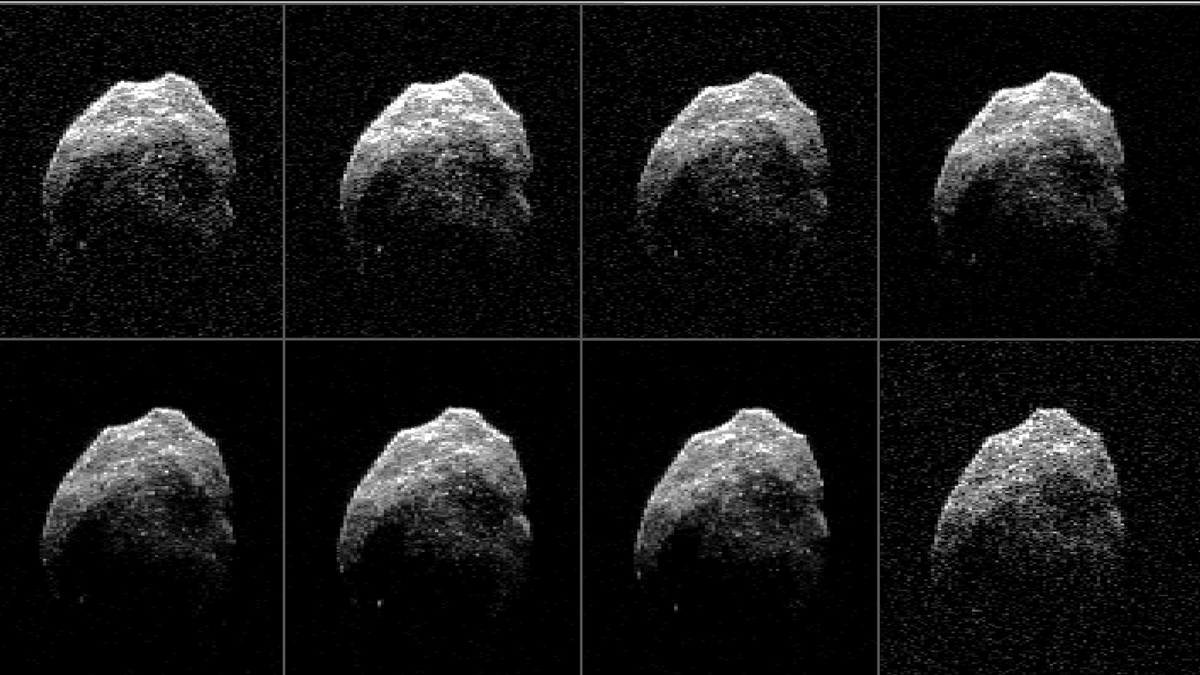
Finally, these lists do not include apparent “asteroids” that might be “extinct” or possibly “dormant” comets. (These objects are discussed in a future “Special Topics” presentation.) Several such objects have passed close to Earth from time to time; the closest such approach was by 2015 TB145, which passed only 0.00325 AU (486,000 km, or 1.27 lunar distances) from Earth on October 31, 2015. (This object was popularly called names like the “Skull Asteroid” since radar images showed two surface indentations remarkably similar to the appearance of eye sockets on a human skull, and since its approach to Earth took place on Halloween.) The Damocloid 1999 XS35 (orbital period 75 years) had passed 0.045 AU from Earth on November 5, 1999, four weeks before its discovery.
Comets will, of course, continue to approach Earth from time to time in the future; I have pointed out in a previous “Special Topics” presentation that Comet 1P/Halley will pass just 0.096 AU from Earth during its 2134 return, and meanwhile Comet 109P/Swift-Tuttle – the parent comet of the Perseid meteor shower, and a future “Comet of the Week” – will make moderately close approaches to Earth during both of its next two returns (in 2126 and 2261). In the near term, while for obvious reasons any forthcoming close approaches by as-yet-undiscovered comets cannot be predicted, we can certainly determine when already-known short-period comets will be coming close by. The following table lists those short-period comets that will be passing within 0.2 AU of Earth during the next two decades.
| Comet | Approach date | Distance (AU) |
| 364P/PANSTARRS | 2023 April 7 | 0.121 |
| 169P/NEAT2026 | August 11 | 0.167 |
| 249P/LINEAR | 2029 November 3 | 0.057 |
| 252P/LINEAR | 2032 March 15 | 0.058 |
| 15P/Finlay | 2034 August 13 | 0.185 |
| 289P/Blanpain | 2035 November 6 | 0.082 |
| 300P/Catalina | 2036 June 9 | 0.051 |
| 141P/Machholz 2 | 2036 December 19 | 0.125 |
| Catalina P/2009 WX51 | 2037 April 18 | 0.052 |
| 107P/Wilson-Harrington | 2039 October 31 | 0.108 |
“Active asteroids” and potential “extinct” comets that will be making close approaches to Earth during this same interval include: (14827) Hypnos, 0.078 AU on June 2, 2024; (2101) Adonis, 0.036 AU on February 7, 2036; (101955) Bennu, 0.099 AU on February 11, 2037; 2015 HX176, 0.099 AU on April 1, 2038; (16960) 1998 QS52, 0.081 AU on June 10, 2039; and (2201) Oljato, 0.100 AU on December 16, 2040.
Earth certainly isn’t the only planet that comets pass close to; the other planets get their occasional cometary visitors as well. Jupiter has comets passing by all the time – often significantly affecting their orbits in the process – and, of course, we have already seen one comet strike Jupiter (Comet Shoemaker-Levy 9, in 1994; this is a future “Comet of the Week”). Just two examples of many comet/planet encounters that have taken place in recent years include an approach to Mars of 0.072 AU by Comet ISON C/2012 S1 – a future “Comet of the Week” – on October 1, 2013, and an approach to Mercury of only 0.025 AU by Comet 2P/Encke – another future “Comet of the Week” – on November 18 of that same year. The ultimate “near-miss” encounter took place in October 2014 and involved Mars and Comet Siding Spring C/2013 A1; this event will be described in that comet’s “Comet of the Week” presentation.
More from Week 20:
This Week in History Comet of the Week Free PDF Download Glossary
Ice and Stone 2020 Home Page"close" - Google News
May 10, 2020 at 06:00AM
https://ift.tt/35ONNWu
Special Topic: Close Cometary Encounters - RocketSTEM
"close" - Google News
https://ift.tt/2QTYm3D
https://ift.tt/3d2SYUY
Bagikan Berita Ini














0 Response to "Special Topic: Close Cometary Encounters - RocketSTEM"
Post a Comment